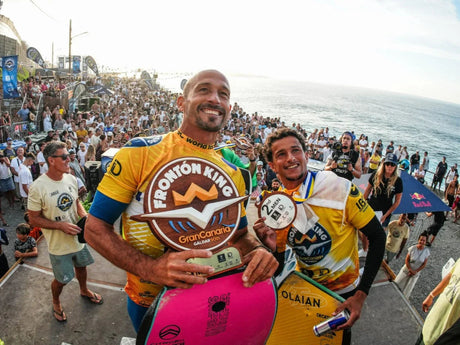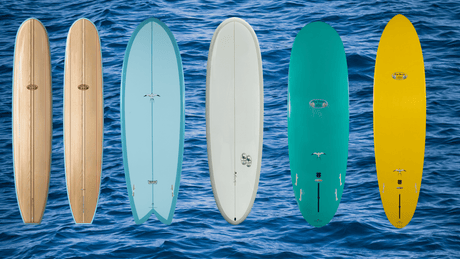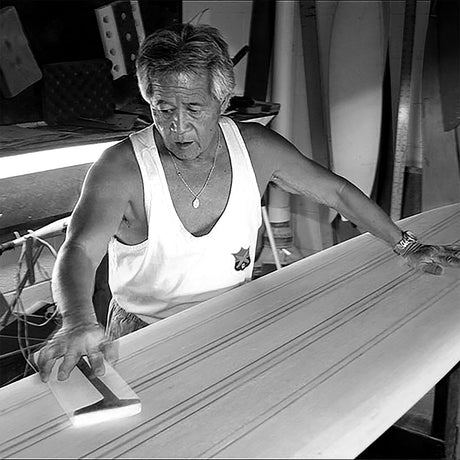The origins of roller skating
Roller skating is an accessory that has spanned eras and continues to captivate both young and old. Its origins date back to the 18th century, when the Belgian inventor John Joseph Merlin designed the first roller skates by attaching metal wheels to a wooden board. Since then, roller skating has had a long and rich history. At the beginning, roller skates were mainly used to perform artistic acts during shows. It was only in the 19th century that the practice diversified with the creation of roller clubs around the world, notably in the United States and Europe.

The evolution of roller skating in the 20th century
Over time, the roller has gradually established itself as a fun and eco-friendly means of transportation. It has also been used in various sports disciplines such as:
Roller Hockey: A variant of traditional hockey played on roller skates. Teams, usually composed of five players, compete to score goals using a ball and sticks.Speed Roller Racing: Highlights the speed and endurance of the skaters. On specially designed tracks, participants engage in long-distance races, ranging from sprints to marathons.
Roller Slalom: An artistic discipline that involves performing technical movements by slaloming between cones or obstacles. Skaters chain together acrobatic figures, spins, and tight turns with elegance and precision.
Roller Derby: A team sport on roller skates, taking place on an oval track. Two competing teams face off, each team having a player designated as the "jammer" responsible for scoring points by passing opposing players. The "blockers" defend their jammer while trying to hinder the opposing jammer.
Freestyle Rollerblading: Freestyle rollerblading encompasses various artistic and acrobatic disciplines on roller skates. This includes street roller figures, jumps, slides, tricks, and sometimes even roller dancing. Freestyle roller skaters push the limits of creativity, using the urban environment as their playground.
To learn more about the different roller disciplines, visit our article: The different roller disciplines.  It was also during the 20th century that roller skating experienced many technological developments that improved comfort, safety, and performance for practitioners. The main advances are:
It was also during the 20th century that roller skating experienced many technological developments that improved comfort, safety, and performance for practitioners. The main advances are:
- The appearance of quad roller skates (4 wheels per skate)
- The creation of inline skates, also called inline rollers
- The use of lightweight and durable materials such as plastic or carbon fiber for skate shells
- The adoption of more secure and adjustable fastening systems at the practitioner's foot
The success of rollerblading in the 80s and 90s
The 1980s and 1990s were a pivotal period for roller skating, marking an era when this activity experienced exceptional success, becoming a cultural and sporting phenomenon in its own right.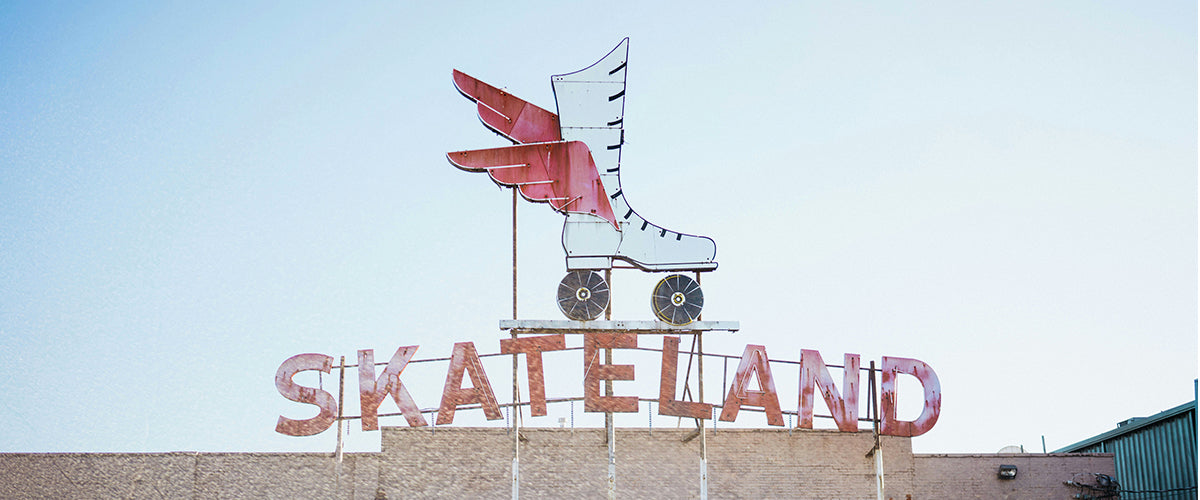 The enthusiasm for roller skating was significantly boosted by the portrayal of roller skating in the media, especially in popular films and TV series of the time. Iconic productions like "Xanadu" and "Roller Boogie" helped to embed the image of roller skating in popular culture. These cinematic works captivated audiences by featuring impressive choreography, thrilling competitions, and a dynamic visual aesthetic, thus elevating roller skating to the status of a trendy and entertaining activity. This era also saw the emergence of international roller competitions, providing a platform for talented skaters to demonstrate their agility and virtuosity. Events such as the roller world championships attracted global attention, sparking growing interest in the discipline. These competitions helped to raise the skill level and expand the reach of roller skating as a competitive sport.
The enthusiasm for roller skating was significantly boosted by the portrayal of roller skating in the media, especially in popular films and TV series of the time. Iconic productions like "Xanadu" and "Roller Boogie" helped to embed the image of roller skating in popular culture. These cinematic works captivated audiences by featuring impressive choreography, thrilling competitions, and a dynamic visual aesthetic, thus elevating roller skating to the status of a trendy and entertaining activity. This era also saw the emergence of international roller competitions, providing a platform for talented skaters to demonstrate their agility and virtuosity. Events such as the roller world championships attracted global attention, sparking growing interest in the discipline. These competitions helped to raise the skill level and expand the reach of roller skating as a competitive sport.
The advent of adjustable roller skates played a crucial role in the popularization of roller skating. These new models offered greater accessibility by allowing skaters to adjust the size of the skates according to their growth. This feature eliminated the constraints related to the rapid growth of children, thus paving the way for broader and earlier participation in roller skating.
The 80s and 90s were also the birthplace of brands specializing in the design and distribution of roller equipment. These companies played a crucial role by offering quality products tailored to the specific needs of skaters. The variety of models, styles, and features helped diversify the roller experience, allowing practitioners to choose equipment that matched their individual preferences.
The creation of tracks and skateparks specifically dedicated to roller skaters has provided a safe and stimulating playground. These facilities have fostered the growth of the roller community by offering spaces dedicated to practice, learning, and skill improvement. The rise of skateparks has also encouraged the emergence of disciplines such as street roller, further enriching the diversity of practices.
 The success of rollerblading in these years stems from a combination of factors, ranging from media representation to the democratization of equipment. These decades have left a lasting legacy, contributing to the sustainability and continued popularity of rollerblading worldwide.
The success of rollerblading in these years stems from a combination of factors, ranging from media representation to the democratization of equipment. These decades have left a lasting legacy, contributing to the sustainability and continued popularity of rollerblading worldwide.
Rollerblading in the 21st century
During the 21st century, roller skating has continued to evolve and maintain its place as a diverse activity, although its popularity may have experienced fluctuations. Despite periods when other activities may have attracted more attention, roller skating remains a practice appreciated for its many benefits, both physically and socially.
La diversification des disciplines sportives liées au roller a joué un rôle clé dans son maintien et son renouvellement au XXIe siècle. L'introduction du roller freestyle, par exemple, a apporté une nouvelle dimension à la pratique, mettant l'accent sur la créativité, l'expression artistique, et l'exécution de figures acrobatiques. Cette discipline a gagné en reconnaissance avec l'organisation de compétitions internationales dédiées, offrant aux patineurs une plateforme pour exhiber leurs compétences innovantes et stimulant ainsi le développement de cette branche du roller. Au-delà du roller freestyle, d'autres disciplines ont également connu des évolutions notables. Le roller derby, par exemple, a gagné en popularité au XXIe siècle avec une croissance significative de ligues et de compétitions à travers le monde. Les communautés de roller derby se sont développées, attirant de nouveaux participants et renforçant le statut du roller en tant que sport compétitif.
Au-delà du roller freestyle, d'autres disciplines ont également connu des évolutions notables. Le roller derby, par exemple, a gagné en popularité au XXIe siècle avec une croissance significative de ligues et de compétitions à travers le monde. Les communautés de roller derby se sont développées, attirant de nouveaux participants et renforçant le statut du roller en tant que sport compétitif.
Roller and Olympic Games
The inclusion of roller skating in the Olympic program at the Paris 2024 Games, marking its historic debut, represents a significant milestone for this dynamic discipline. This recognition reflects the evolution of roller skating as a serious and competitive sport in the global sports landscape.
This Olympic recognition highlights not only the growth of the discipline but also its commitment to high sporting standards. Roller skaters can now aspire to compete at the highest level, alongside athletes from more traditional disciplines, within the prestigious framework of the Olympic Games.
The inclusion of roller sports in the Olympic Games also illustrates how alternative and emerging sports can be a means of connecting with new audiences and new generations. This offers a unique opportunity for roller sports to gain global recognition and inspire more people to get involved in this activity.
Roller Dance and other innovative practices
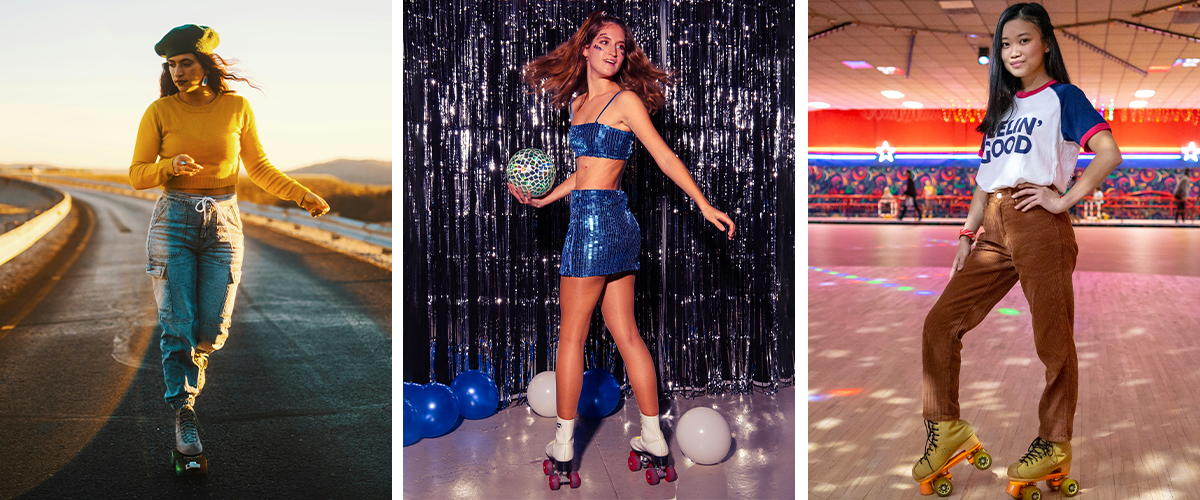 New practices regularly emerge and help renew interest in roller skating. For example, Roller Dance is gaining increasing popularity and combines dance, music, and roller skates. The third edition of the Passeurs de Lumière event in Quimper in December 2023 included Roller Dance in its program. In conclusion, roller skating has managed to transcend eras and appeal to different generations thanks to its versatility, adaptability, and playful aspect. From its humble origins as a simple show accessory to the Paris 2024 Olympic Games, it remains more popular and dynamic than ever.
New practices regularly emerge and help renew interest in roller skating. For example, Roller Dance is gaining increasing popularity and combines dance, music, and roller skates. The third edition of the Passeurs de Lumière event in Quimper in December 2023 included Roller Dance in its program. In conclusion, roller skating has managed to transcend eras and appeal to different generations thanks to its versatility, adaptability, and playful aspect. From its humble origins as a simple show accessory to the Paris 2024 Olympic Games, it remains more popular and dynamic than ever.



